
Page contents
- 1 Cervical spine - symptoms
- 2 Diagnosis of the disease
- 3 Treatment
- 4 Exercises with a hernia of the cervical spine
Hernia of the cervical spine consists of a rupture of the spinal disc with an uneven distribution of the load on the spine. The fibrous ring breaks, followed by the destruction of the pulpous nucleus as a result of a decrease in the elasticity of the intervertebral disc, and also with excessive axial load, after which the intervertebral disc ceases to perform its amortization functions.
In most cases, the hernia of the cervical spine is accompanied by various neurologic diseases, for example, osteochondrosis. This aggravates the general condition of the patient and complicate the treatment.
Hernia of the cervical spine - symptoms
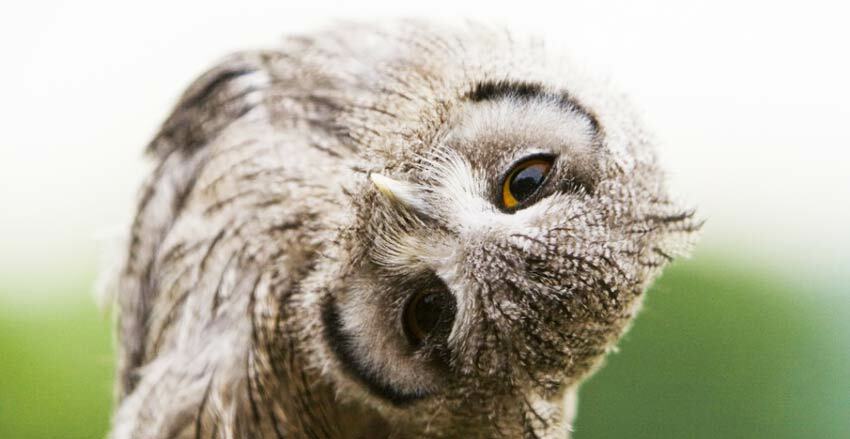 Hernia of the cervical spine during the exacerbation is accompanied by the following symptoms:
Hernia of the cervical spine during the exacerbation is accompanied by the following symptoms:
- pain in the neck, especially when turning the head;
- acute sharp or muffled pain in the hand;
- acute sharp pain in the shoulder and up to the brush, fingertips;
- weakness and pulling sensations in the hand;
- a violation of the blood supply to the brain and, as a consequence, a stroke.
In the latent course of the disease, without significant exacerbations( chronic), symptoms occur, such as a decrease in the sensitivity of the upper limbs, impairment of the musculoskeletal system, sudden changes in mood, depressive state, headache, unstable blood pressure, and even a slight cough.
Hernias of the cervical spine are distinguished depending on:
- anatomy( free, wandering, moving);
- location( intra-spinal, foraminous, lateral or anterior);Direction of precipitation
- ;
- size( prolapse, disk protrusion, disk extrusion).
In the treatment of hernia, the key role is played by accurate and early diagnosis, which helps in a short time to conduct treatment without surgery.
Diagnosis of the disease
 Diagnosis is performed using magnetic resonance imaging. This method is the most effective, accurate and allows in a short time to determine the size of the hernia, its location and the stage of development of the intervertebral hernia with high accuracy. If there are contraindications for the MRI diagnosis, a CT scan with contrast agents is prescribed.
Diagnosis is performed using magnetic resonance imaging. This method is the most effective, accurate and allows in a short time to determine the size of the hernia, its location and the stage of development of the intervertebral hernia with high accuracy. If there are contraindications for the MRI diagnosis, a CT scan with contrast agents is prescribed.
But its use in the diagnosis of various types of hernias is unreasonable because of trauma when introducing contrast agents.
When diagnosing, it is important to exclude or detect other pathologies that aggravate the patient's condition.
Treatment
In the first stages, the hernia of the cervical spine is treated without surgery. The attending physician gives recommendations.
The main methods of treatment:
- medication;
• physiotherapy;
• exercise therapy and various exercises;
• massage;
• Acupuncture;
• Manual therapy.
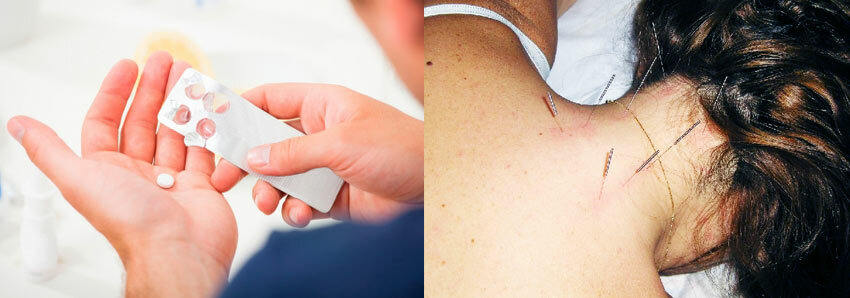 Before non-surgical methods of treatment there are two main tasks:
Before non-surgical methods of treatment there are two main tasks:
- get rid of the pain syndrome and neurological complications;
- to stop the development of the disease and the emergence of new hernias.
Thus, at the 1st stage of treatment, pain pain should be eliminated.
The patient is temporarily advised to be in a horizontal position while taking painkillers and anti-inflammatory drugs at the same time. As a result, the process of the action of the cervical discs stops on the nerve endings and reduces the pain.
The most common and effective non-steroidal anti-inflammatory drugs include: 
- orthophene,
• diclofenac,
• reopyrin.
But they have a negative effect on the digestive tract.
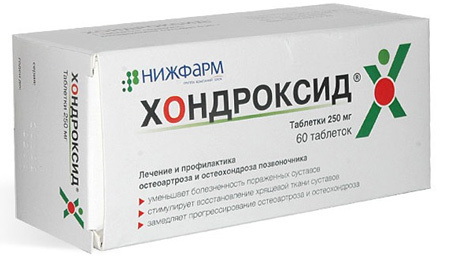 Chondroprotectors:
Chondroprotectors:
- chondroitin complex;
• Chondroxide.
The principle of action of such drugs is to prevent further dislocation of the intervertebral disc and improve metabolism in the cartilage tissues.
Muscle relaxants:
- metaxalone;
• Midsummer.
Contribute to the removal of muscle spasms and prevent further dislocation of the disc. Trental and its derivatives improve blood circulation in the area of dislocation of intervertebral discs. The approximate scheme of treatment: midokalm 1 tab 3 times a day + NO-SHPA + Voltaren + Chondroxide.
Or orthophene + chondroxide + nimesil.

The next step is to prevent the further development of a hernia in the cervical section and its prevention. The main methods are massage and directed physical exercises.
Exercises for the prevention of cervical intervertebral hernia may be different. They depend on the presence of a hernia in a person who wants to perform them. Or he wants to warn her appearance.
To exclude the re-emergence of a hernia, it is necessary:
-
 use of orthopedic mattress and pillow;
use of orthopedic mattress and pillow;
• performing exercises and physical therapy;
• exclude a sedentary lifestyle, with sedentary work being interrupted by gymnastics;
• swimming, gymnastics, fast walking;
• Do not make sudden head movements;
• a course of massage.
Also popular methods of treatment are:
- Manual therapy - it is believed that it helps to cope with the disease and return the displaced disks back into place.
- Kinesiotherapy - effects on muscles and joints, relieving muscle tension, restoring muscles and ligaments.
- Acupuncture - neutralizes pain and spasms, improves blood flow to tissues.
- Hirudotherapy - treatment with leeches. When ingested, hirudin relieves inflammation and improves blood circulation.
Exercises for a hernia of the cervical spine
Unfortunately, drug therapy in combination with exercise therapy, manual therapy and similar methods is not always effective. In different cases, they do not produce the desired results, and the spinal disc is still shifting. In such cases, the risk of disability is high. 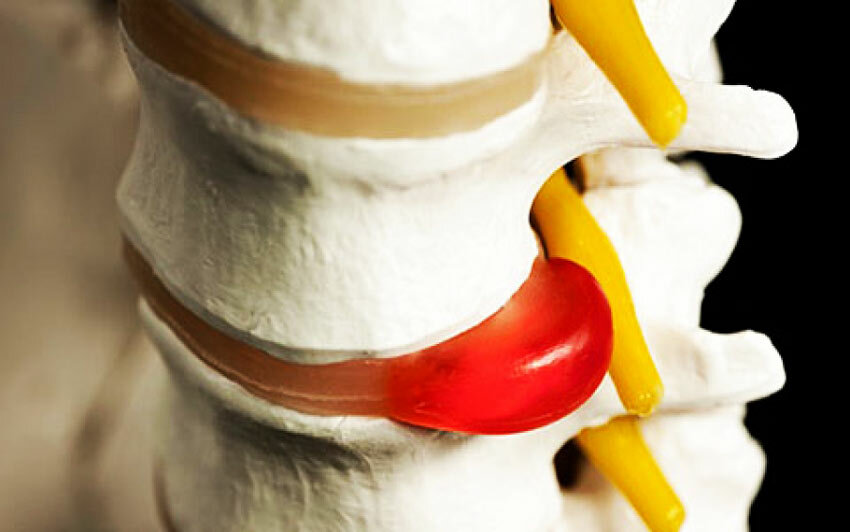
An operation is performed to remove the hernia of the cervical spine in the following cases:
- treatment does not give the desired effect within six months from the beginning of therapy;
- the patient's condition is not stable, or there is no positive dynamics;
- continuous severe pain;
- hernia progresses, the intervertebral disc collapses;
- malfunction of the musculoskeletal system as a consequence of the disease;
- disruption of the pelvic organs, as well as sexual and excretory systems.
Surgery to remove the hernia of the cervical spine may be as follows:
- Discectomy - a cut is made on the body, the problematic area of the bone tissue is removed or the entire disk is removed. This operation neutralizes various kinds of pinching, the vertebrae become stationary with each other. Disadvantages: high probability of injuries and complications( neurological and infectious).
• Microdiscectomy - removal of intervertebral discs through a small incision. Significant reduction in traumatism of surrounding tissues and recovery period after surgery.
• Laser decompression - insertion of a needle into the disk together with a laser LED.The flow of energy of a strictly installed power turns the liquid of the disk into steam, the internal disk pressure and the effect on the nerve endings are reduced. Effective in the initial stages of protrusion and without the destruction of the disc. The rehabilitation course for recovery of the patient is carried out in the shortest possible time.
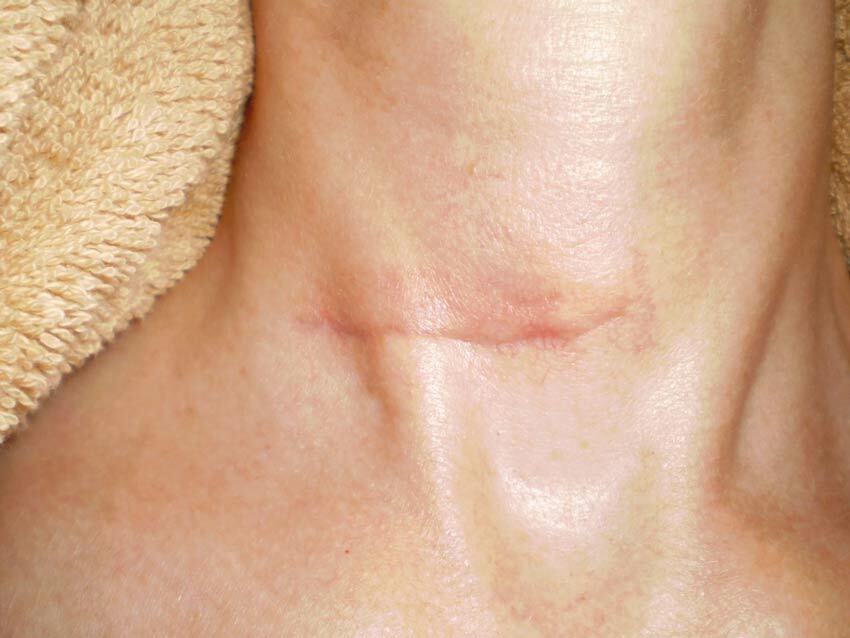
Rehabilitation after laser decompression lasts about 1 month.
Recommendations:
- Admission of NSAIDs, for example, movalis, tselebreks, nimesil according to the prescription of the doctor.
- Failure for a month from various elektroprocedures and massage to the problem department of the spine. Laser therapy and magnetotherapy are allowed.
- During the first month after the operation, strong physical activity is prohibited.
- During the first month after the procedure, it is necessary to wear a corset, compression underwear.
- Avoid overcooling.
Folk remedies
How to treat a hernia of the cervical spine can be suggested to us by folk medicine. Recipes for various tinctures and ointments are many. Here are the most popular and effective ones. Before using them, carefully read the composition of folk remedies and make sure that there is no allergy to any component. 
- One of the time-tested methods of treating intervertebral disc herniation:
Compress of camphor oil , covered with a towel in hot milk, hold for 2 hours. Next, massage with light and smooth movements of the spine and the location of the hernia, until completely absorbed. For the whole night we apply a mixture of lively + honey or onions + sugar. Drink an acetylsalicylic acid tablet with hot tea and shelter well with a warm blanket. In the morning, stretch your back with smooth movements, with camphor oil. The duration of treatment is one week, prevention - every 6 months. - Chopped onion of Indian onion + honey , in a ratio of 1: 1.
Rinse the sore spot with the prepared mixture and keep it warm.
The course of treatment is 1-2 weeks, until the end of the mixture. - Mumiyo Altaic.
5 crushed tablets "Golden mummy" + 50 ml with warm water + 100 g of honey.
Apply to the sore spot the prepared mixture for 10 minutes, pre-rastering it with fir oil
Completely remove the remnants of the mixture.
We put on the back tincture of the saber and stay warm.
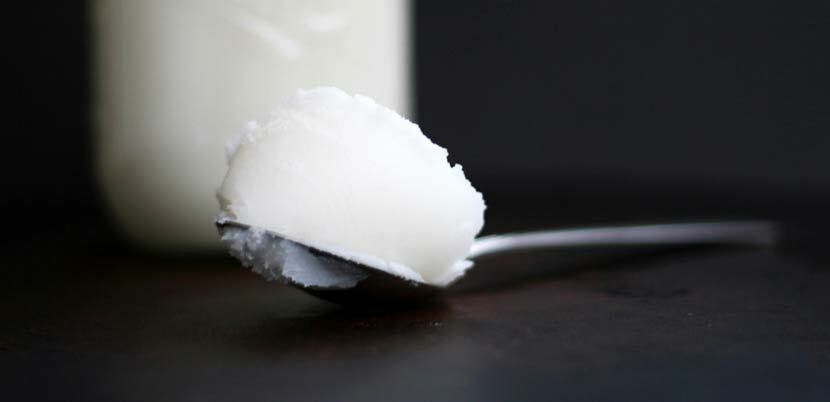
- Ointment for rubbing:
200g of pork baked fat + 100ml solution of althea + cook for about half an hour after boiling + 100g of beeswax + leave on fire for 5 minutes. Chilled ointment rubbed into sore spots. - 5 kg of dandelions, grind and in a separate container drain the juice + 500 ml of 96% alcohol, infuse for 2 weeks. At night, with a warm mixture we rub the problem area. The course of treatment 3 times for 2 weeks, with a break for 2 weeks.
- Compress # 1.
100 ml of tincture of althea root + 25 g of thyme + 25 g of wormwood bitter + 50 g of string( grass) + 1500 ml of cold water. Leave for an hour, then cook on low heat for 15 minutes. The compress is applied to the sore spot, if necessary. - Compress # 2.
350 g of garlic + 500ml of vodka, we insist for 2 weeks. Apply a compress and, necessarily, a warming cloth. - Relieves severe pain.
The peeled and hot halves of the hard-boiled egg are applied to the desired area. For the presence of a burn, do not worry, it will not. Pain removes perfectly.
Gymnastics, exercise therapy and other physical exercises
The cervical spine is quite sensitive, so any exercises must be done very carefully. Gymnastics is always selected individually by the attending physician. Contraindication for many exercises is an acute period. Nevertheless, we will result some complexes of exercises which should be carried out at this diagnosis.
During the exercise, if any painful sensations or other symptoms occur, it is necessary to stop the therapeutic gymnastics.
Exercises for cervical hernia
Exercises for the treatment of a hernia in the cervical spine can be performed only after the removal of swelling and pain.
- PI - feet shoulder width apart, arms along the trunk. Make smooth turns with your head.5-10 times
- IP - feet shoulder width apart. Head down and forward.5-10 times
- IP - feet shoulder width apart. Move your head back, stretching your neck.5-10 times.
- IP - sitting at an angle of 90 degrees. Turn the head left / right. Put the head first on the right shoulder, then on the left, lingering in this position for 10 seconds.3 approaches in each side for 10 seconds.
- IP - sitting at an angle of 90 degrees. Smoothly throw your head back for 10 seconds. We return to the FE, 5 times.
- IP - sitting at an angle of 90 degrees. Tilt the head forward( so that the chin reaches out to the chest), 20 seconds and return to the FE.5 times.
- IP - sitting at an angle of 90 degrees. Turn the head to the left until it stops, 10 seconds - PI - repeat this same movement to the right.5 times in each of the parties.
There are many complexes of such exercises. It is important that their structure and principle of action include small loads( the first group of muscles a day - 2 days for rest - the second group of muscles).These complexes should be made up of exercises based on various kinds of pull-ups, smooth turns, push-ups. The duration of the gymnastics should not exceed 20 minutes.
All exercises must be performed gently and smoothly. In no case should you make sudden movements. The given complex of exercises is useful not only for people suffering from the intervertebral hernia of the cervical department. Also, it is good for the prevention of pinching and improvement of the cerebral circulation.
It is worth to abandon the above exercises if:
- the patient has a suspicion of oncological diseases
- acute period with various diseases
- internal bleeding
- stroke, pre-stroke condition and other acute circulatory disorders
- severe pain
- Increased blood clotting, including thrombosis
- deviations inwork of the cardiovascular system.
In fact, how many people, so many opinions. Someone resorts only to the help of traditional medicine and experienced professionals. Others believe that we are one with nature and only natural recipes that come to us from ancestors will completely cure our ailment. And someone from the young age is regularly engaged in moderate physical activity to prevent such problems.
Feedback on treatment
Review # 1
I thought that I was going crazy with terrible pain in the shoulder. Anesthetics did not help for a long time. I had to alternate several medications a day. Nemli hands and frozen fingertips. Was diagnosed with "Herniated cervical spine."
Pain and inflammation were withdrawn from me, and my exercises were too lazy. After half a year, when I felt the return of the symptoms, I started to practice physical therapy. Now every morning I start with an easy gymnastics.
Evgenia, Moscow
Review №2
Pain in the cervical spine is accompanied by numbness of hands and fingers, headache, unsteadiness, dizziness and nausea.
Cause osteochondrosis, dislocation of intervertebral discs with a pinched nerve. In the treatment resorted to manual therapy or massage. I went through the course of acupuncture. The effectiveness of treatment is high, good results. The main thing is to find your doctor. The doctor corrects the disks, straightens the spine, removes the clenching of the spinal cord.
Marina: After a discectomy it was very difficult to restore until I found your article. Thanks to this wonderful complex of exercises, I completely recovered. Started with light exercises and gradually reached the full recommendations. Now I feel great. Thank you so much.
Igor, SPb
Review No.3
I would like to share my experience. After the diagnosis of a hernia of the cervical spine, he was treated for about 6 months, but the treatment did not give the desired effect. Pain and discomfort constantly returned. The attending physician began to insist on the operation and suggested several ways of surgical intervention. I stopped for laser decompression. The period of hospitalization was 3 days. The operation lasted about an hour. There were no complications, as he followed all the recommendations of the doctor. It is very convenient and fast, especially for those who are limited in time.
Kirill, Novosibirsk

